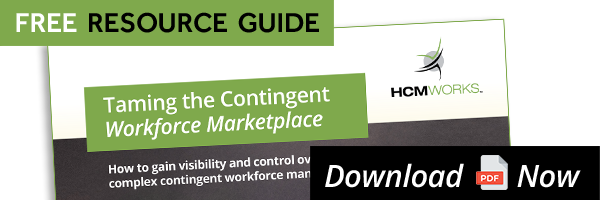The future of business can be uncertain at times, especially as the world keeps moving at a pace that leaves many struggling to keep up. More often than not lately, business experts report concerns about being unable to predict the next trends, whether economic or in the labor market and this has left all kinds of problems in its wake: skill shortages, under or unemployment and even profit losses. Without a strong eye on the future and a handle of how things will continue to change, too many companies are at a loss of what to do and where they're going. Luckily, many of those changes come down to one factor.
In the last decade, changes in technology have affected every single facet of life; how we communicate, how we have fun, how we work, even our home lives – so it's only natural that the face of business would change dramatically as well. Consequently, this has led to changes in human resources and how we interact with our employees overall. Traditional methods and processes have started to vanish, replaced instead with a business world full of new variables. How do we keep up with a shifting global marketplace without compromising goals? How can we react to an uncertain future with confidence? And, perhaps most importantly, how do we fill the new and sudden gaps in our personnel?
The Contingent Workforce
That's where the contingent workforce comes in. A contingent workforce can include people in any industry, from arts and design to engineering and technology. They are freelancers, consultants, contractors, temporary workers, and other non-permanent workers that are vastly growing in popularity as time goes on. Some studies show that a full 40% of America's workforce will be freelancers by 2020 – 60 million people in the U.S. alone. The reason for this? Efficiency, productivity, and the freedom offered to both employees and employers are a huge draw.
Contingent workers are being hired to fill gaps in the workforce, areas where full-time skilled workers appear to be missing or are otherwise unqualified. While some companies may be dubious about hiring these kinds of workers, many more have embraced this new paradigm.
Flexibility
Flexibility is often touted as the greatest benefit of the contingent workforce. For companies working on specific projects, they may consider hiring workers to use their highly specialized skill-set for the term of the project. Alternatively, a full-time employee with the same skill-set may find himself or herself with nothing to do once the project is over, and can become a burden of cost. Some common yet important tasks within a company can only really take up a few hours a week, yet dedicating a full-time employee to them can be a waste of their time and skills. On the other hand, hiring a freelancer to handle those tasks frees your employees’ time up and can save you a lot of money in the long run. The contingent workforce can be aimed at specific areas within a company as well, and can take the form of payroll experts, human resource representatives, social media experts, content creators, or other positions that might seem a waste to hire a full-time employee into.
Contingent Workforce Management Providers
Due to the rise of contingent workers, many agencies have risen to respond to this need, ensuring you have a vast pool of reliable, highly skilled talent at your fingertips for when those situations arise. They have vast networks of proven workers, and can offer some excellent advice on how to use your newly found contingent workforce. Agencies can navigate the relatively new and rocky waters surrounding freelancers, making sure you can trust your hires and get the best possible people to work with you.



